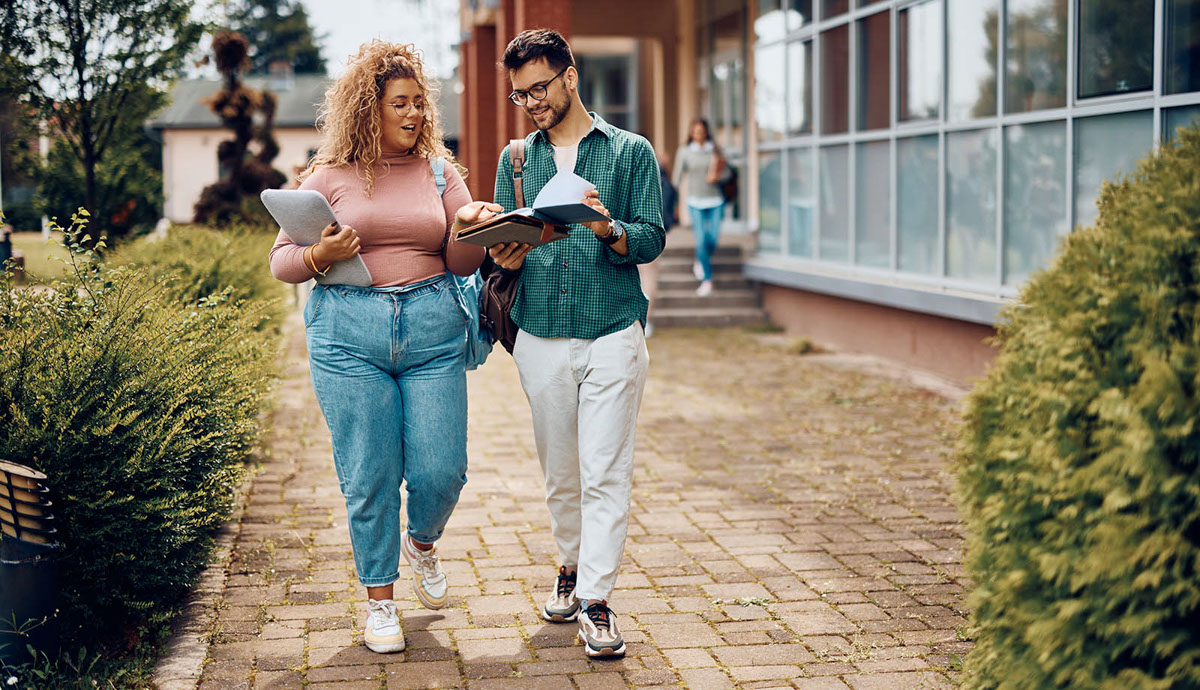Spaces and resources
Spaces and resources
You're probably coming to campus to attend classes, but a university is much more than a collection of classrooms. Universities provide students with a variety of study, collaboration, social, recreational and creative spaces.
The campus
University campuses are vibrant places and can be crowded with people walking to various buildings and social spaces. The campus community is generally made up of students, teachers, professional staff, and visitors.
Some of your learning may take place on campus where spaces are set up for a variety of different types of learning including:
- lectures
- labs
- classrooms for tutorials
- media studios
- creative spaces
- study spaces
- the library
- common areas
- cafes
Wifi allows you to connect your PC, laptop, mobile phone or tablet device without using a cable. Wifi access points are across the campus, making everywhere a study space.
University campuses provide recreational and social spaces for students such as sports facilities, like gyms, basketball courts and running tracks. Social events are held on campus for students to hang out with classmates and get to know their peers.

University libraries as community and cultural spaces
University libraries are centrally located on campus where the university community can come together to meet, collaborate and build a sense of place. Libraries are often positioned near other services where you may seek information and advice, like the enrolment centre and student union.
The library is a space where people can come together to share ideas, connect with one another, exchange knowledge, and work towards common goals. It's a great place to achieve success in your studies and take advantage of the opportunities that tertiary education offers. Libraries help build community in several ways. They offer study support through drop-ins or consultations, workshops and training, as well as cultural events like exhibitions and seminars. At the same time, libraries also provide a quiet environment for students to study on their own.
Universities commonly have artistic and creative spaces such as art galleries, cinemas, and dance spaces. Some Libraries manage makerspaces, where students gather to work on projects while sharing ideas, equipment, and knowledge. A makerspace is often equiped with 3D printers and laser cutters.
Study spaces
The space in which you work plays an important role in productivity as well as improving focus and efficiency.
There will be times when you will need to use a designated study space on campus or at home for group work, individual study and listening to online lectures and presentations.
When setting up a study space, it’s a good idea to have all the materials you need within reach. That could be physical items like a notebook, pens, highlighters and course material like course notes, textbooks, calculator.
When setting up a digital study space consider bookmarking study resources frequently used to improve organisation. It's also set up some folders for online documents for your courses.
When working in a group space on campus, or at home, choose a space that will enable you and your group members to talk freely, exchange ideas and plan your work. Booking a group room on campus is one option and another is to arrange an online meeting with your group.
When setting up an individual home study space, if possible, choose a space which allows you to control the lighting, sound, and temperature. Creating a comfortable environment with fewer distractions helps you concentrate. One of the advantages of working from home is that you can set up your study environment as you wish.
Important things for a good study space are:
- a dedicated desk
- a comfortable ergonomic chair
- access to power
- access to internet
- good lighting
- temperature – not too hot or cool.

Images by Drazen and sinseeho on Adobe Stock
